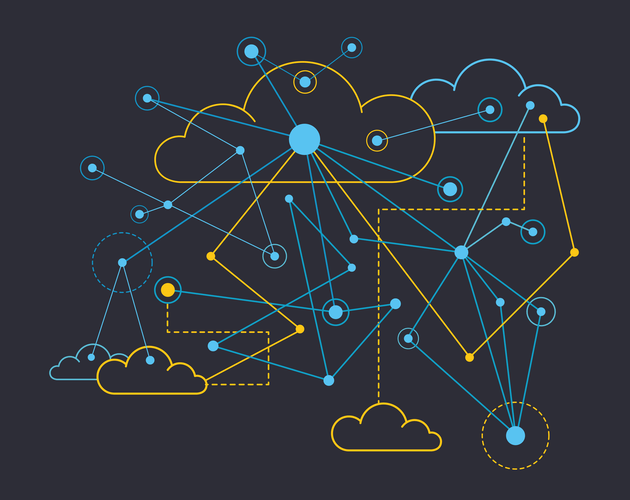They will analyze the strengths and weaknesses of the different technologies and determine which one is best suited to the project. The team will also analyze the market to identify any potential competitors and assess the current trends in the industry. Finally, the team will create a user interface design to ensure the software is user-friendly. During this phase, it is important to ensure that the team can identify areas of improvement and make the necessary changes to the design. By properly managing the analysis phase, the team will be able to create a successful software solution.
Kellton brings the in-depth expertise of the leading software development practices aligned with the agile development approach, enabling businesses to make the right decisions. Our experts help them respond to all the necessary strategic initiatives, from the cloud-migration path to adopting the right cloud platform and microservices/container architecture. This way, we help our clients achieve a shorter time-to-market while reinventing their core software-defined technology capabilities.
Steps in SDLC
It consists of a detailed plan describing how to develop, maintain, replace and alter or enhance specific software. The life cycle defines a methodology for improving the quality of software and the overall development process. The most flexible of the SDLC models, the spiral model is similar to the iterative model in its emphasis on repetition. The spiral model goes through the planning, design, build and test phases over and over, with gradual improvements at each pass. However, unlike traditional software development that addresses security as a separate stage, SDLC addresses security every step of the way through DevSecOps practices. Developers are now responsible for more and more steps of the entire development process.

This results in more iterations and many more tests compared to other models. T’s important that the software overall ends up meeting the quality standards that were previously defined in the https://www.globalcloudteam.com/ SRS document. The main focus of this SDLC phase is to ensure that needs continue to be met and that the system continues to perform as per the specification mentioned in the first phase.
Streamline Your Business with Custom ERP: Step-by-Step Guide
Once a business need is approved, the approaches for accomplishing the concept are reviewed for feasibility and appropriateness. The Systems Boundary Document identifies the scope of the system and requires Senior Official approval and funding before beginning the Planning Phase. The initiation of a system (or project) begins when a business need or opportunity is identified. After the Concept Proposal is approved, the System Concept Development Phase begins.

Intellectsoft works at the cutting edge of SDLC tech and can help you implement it in your organization. The Agile model prioritizes collaboration and the implementation of small changes based on regular feedback. The Agile model accounts for shifting project requirements, which may become apparent over the course of SDLC.
Which SDLC model is the best and most commonly used?
But, to work at their best, everyone in a software development team should have a good working knowledge of all stages of the SDLC. A SRS is prepare at the end of requirements analysis phase and the document specifies the functional requirements, development framework, hardware and network requirements. Planning stage is the vital stage of the system development life cycle process because it determines required resources, timeframe, budget, personnel, technical aspects to complete the project. At Intellectsoft, we know how important an effective project management strategy is.
- ” This phase of the SDLC starts by turning the software specifications into a design plan called the Design Specification.
- The project is put into production by moving all components and data from the old system and putting them in a new one through a direct cutover.
- This keeps everyone using the same toolset across the entire development lifecycle.
- Software engineers rarely have a say at the table, and software strategies are mulled over and defined two or three layers down in the hierarchy.
- This will prevent them from overdrawing funding or resources when working at the same place as other development teams.
- The team should also create a risk management plan to identify and mitigate any potential risks during the project.
- This also equips the system with the latest technologies to face new and stronger cybersecurity threats.
The system development life cycle (SDLC) is an iterative, structured, and multistep process that is used by teams to create high-quality information systems. It involves the activities of planning, analysis, designing, building, testing, deploying, and maintaining a system that meets or exceeds client expectations. An SDLC (software development life cycle) is a big-picture breakdown of all the steps involved in software creation (planning, coding, testing, deploying, etc.). Companies define custom SDLCs to create a predictable, iterative framework that guides the team through all major stages of development. Apart from testing, the team will also perform security testing to ensure that the software is secure from outside threats.
Dynamic System Development Model
This is usually an outline in a narrative form with accompanying flow charts, procedure charts, data flow diagrams or data models. An introduction covering the relevance of the document and how it has evolved from the previous phases. This includes control over input and processing, restrictions on access (e.g., pass words) and control on output (e.g., numbering of cheques). The system design also describes the data to be input, calculated or stored. Individual data items and calculations procedures are written in detail.
When modifications or changes are identified as necessary, the system may reenter the planning phase. SDLC done right can allow the highest level of management control and documentation. All parties agree on the goal upfront and see a clear plan for arriving at that goal. It’s also important to know that there is a strong focus on the testing phase.
Software Testing Stage
Thanks to that, it is simple to control and manage since each stage has a particular deadline and deliverables. However, the methodology would not work on long and more complex projects with high levels of uncertainty and changing requirements. As soon as the software is in the testing stage, it is almost impossible to go back and change some features that were not initially stages of system development life cycle thought over. It’s linear and straightforward and requires development teams to finish one phase of the project completely before moving on to the next. The SDLC life cycle process is repeated, with each release adding more functionality until all requirements are met. In this method, every cycle act as the maintenance phase for the previous software release.

With issues worming in, chunks of money used to go down the drain in fine-tuning the basic releases only. Emerging as a cult industry practice, it talks about establishing a predictable and iterative process for each stage of software development. And, as noises around integrating security earlier in system development lifecycle phases grow louder, SDLC is here to rock the boat, one wave at a time. In SDLC, documentation is crucial, regardless of the type of model chosen for any application, and is usually done in parallel with the development process.
Phase 5: Testing
As the SDLC is a repetitive methodology, you have to ensure code quality at every cycle. Many organizations tend to spend few efforts on testing while a stronger focus on testing can save them a lot of rework, time, and money. The big bang model is a high-risk SDLC type that throws most of its resources at development without requiring an in-depth analysis at the start of the cycle.






